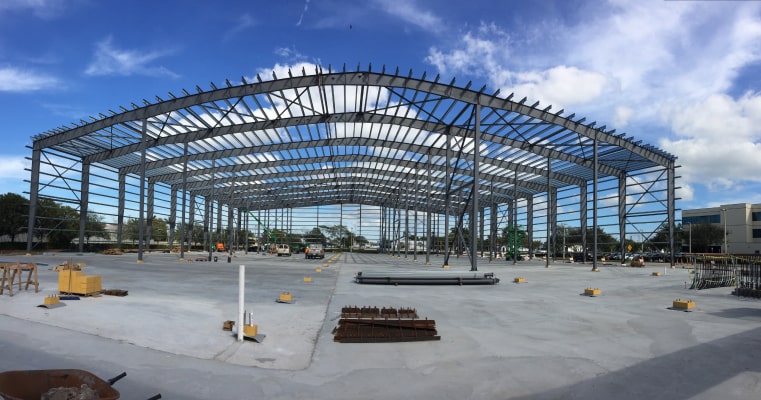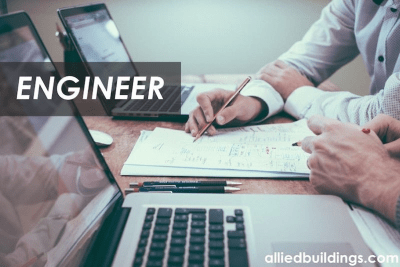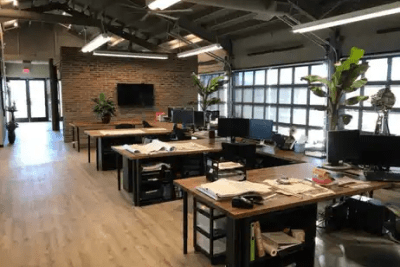The Metal Building Construction Process

Planning is an integral part of all building projects, and the construction of metal buildings is no exception. Generally, projects tend to go smoother if there was sufficient planning beforehand. Let’s get a bird’s-eye view of the planning process necessary for constructing a PEB so that you can plan in confidence, more efficiently, and with safer investment.
Planning
Large projects always start with a single idea. Beginning the planning process on a piece of scrap paper is a great way to get this idea to flourish. You can think about where you want the accessories such as windows and doors, how large the structure will be, and what it will be used for. Placing your thoughts from your head onto a piece of paper, or 3D building design platform, can really spur the creative process. When you finally talk with an engineer, you’ll have a good grasp of what you’re looking for in the final product. It’s also important to set a budget.
After you’ve generated the seed, it’s time to water that initial idea by making more choices. For example, you need to choose the style of construction you want, the place on your property where it’ll be built, the type and number of accessories you need, and much more. Putting those personal touches on your building is a fun part of the overall process. However, you don’t have to rush into it. You can always make changes throughout the process, after consulting with the professionals involved.
At this point, it must also be decided if general contractors and erectors will be hired or if you’ll handle some of the processes on your own, DIY. There’s no right or wrong answer to these questions as it’s all up to personal preference and capability levels.
Take the next step
We have a passion for unconventional solutions that bring your vision to life.
Engineering

Once you’ve completed the first steps, you can start consulting with the professionals about the engineering of the design. The vast majority of manufacturers keep engineers on staff. These professionals will transform your sketches and ideas from mere abstractions into an actual design. The overall price of the project will be greatly reduced since only pre-engineered parts are being used. Regardless, you’ll be left with a product that was inspired by your specific ideas and needs. The manufacturer will also make sure the construction is compliant with your area’s building codes along with other requirements.
Ordering
After deciding on a particular manufacturer to finalize your design and receiving all necessary approval from local authorities, you’ll be required to place a deposit and an order before any real work can begin. This is standard procedure for most professionals to ensure that they don’t invest valuable resources before receiving a commitment from the client.
Once the drawings are all made up, you might receive erection diagrams and plans for the building. This gives you plenty of time and information to prep the building site before manufacturers break ground. Some professionals might even opt to send anchor bolts that will be used to secure your building to the foundation. These can be used to prepare and lay the foundation as other parts of the construction are manufactured.
Manufacturing

As you prep the construction area for installation, your manufacturer is going to be kept busy making each component of the building. Some pieces might even be taken from inventory if they’re more standard than other customized parts. Unless you plan to erect the building on your own, you’ll need to scout out a general contractor and erector to help. Once the components are brought to your property, everything should be ready to go.
Preparing
Some merchants offer site preparation as part of their overall package, but most manufacturers require that the buyer prepare the construction site. While the manufacturer is busy producing the individual components of the PEB, you’ll need to prepare the site for the erection of the building. Grading, brush removal, excavation, and surveying are just a few components involved in this process.
The foundation engineer will design the details for the size and type of foundation needed for the building to function properly. Although poured concrete is the most typical foundation, there are other types that can be used with regard to the intended use, climate, and location.
Delivery

Be sure to cooperate with your general contractor or erector when it comes to the delivery. You’ll hold responsibility for receiving the order, and the contractor needs to be there to ensure that everything you purchased has arrived, confirming the inventory. All damaged materials and shortages need to be noted and reported to the building supplier. You are typically allowed 30 days to complete the inventory check-in. Cover up and protect the building materials if the construction process isn’t going to start right away. Make sure to follow the manufacturer’s steel building installation manual.
Erection
When you hire a general contractor or erector to handle the assembly of your building, it’s tempting to take a back seat and watch the process from afar. However, it’s important to be present for consultation if any questions come about naturally. The process of erecting steel buildings usually includes setting up the columns, placing the girts and purlins in the right place, and attaching the roof and wall sheeting. Make sure you have all contracts and paperwork handy just in case there is any confusion about what the general contractor is responsible for.
If you’ve decided to tackle the erection process on your own, DIY, be sure to follow the instructions carefully. The same goes for safety instructions. Like any form of construction, serious injuries can result from poor handling or improper techniques. Doing everything right is going to make it easier to enjoy your construction and will lower your costs overall. Make sure to do enough research on the construction process before venturing into that territory on your own.
Construction

After all of the erecting has been accomplished, you’ll be left with the building shell. If you decide to do so, It’s now time to fill out the building. You’ll either hire a contractor or do it yourself to add interior ceilings and walls, skylights, windows, doors, HVAC and electrical systems, insulation, and rough plumbing. Or leave the materials exposed and enjoy the industrial look and feel of your new building.
Finishing

If you chose to do so, in order to complete your structure, you can lay down flooring, paint ceilings and walls, and install external lighting and plumbing fixtures. The outside of the building will need door and window trim, decking or steps, downspouts and gutters, and any other external adornments you’ve decided on.
Walkthrough
While it all depends on where you live, there’s a chance that the new construction will need to pass various phases of inspections. These inspections will be required at intervals in the building process before anything continues. Once the building is completed, you’ll have to book a final inspection with a professional inspector that deems the construction up to code. The inspector will usually issue what’s called a Certificate of Occupancy to give you permission to use the building. You’ll probably do a personal walkthrough of the construction with your contractor in order to make sure everything meets your needs. You can make a short list of small corrections that need to be made in order to schedule the necessary appointments.
We sincerely hope that this short overview gave you some peace of mind and useful information. It’s very exciting and rewarding to design, build, and own your very own Pre-engineered metal building.

